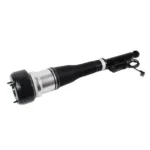Air freight plays a vital role in today’s fast-moving global economy, enabling quick delivery of goods across continents. From perishable items to high-value electronics, air cargo keeps businesses running and markets connected. However, this speed and convenience come with a heavy environmental price—air freight is one of the most carbon-intensive modes of transport. As climate change concerns grow, companies, governments, and logistics providers are under increasing pressure to reduce the environmental impact of their operations. In this article, we’ll explore these practical and impactful ways to lower carbon emissions in ocean shipping operations. These strategies are designed to help businesses fly greener and contribute to a healthier planet without compromising delivery speed or service quality.
1. Optimize Aircraft Load Efficiency
One of the most straightforward ways to reduce carbon emissions is to improve aircraft load efficiency. When cargo is unevenly distributed or underutilized, aircraft burn more fuel per kilogram transported. By maximizing the use of available space and weight capacity through better planning and container optimization, companies can reduce the number of flights required and lower overall emissions. Collaborative shipping models, where space is shared between companies, can also improve load factors.
2. Switch to Sustainable Aviation Fuel (SAF)
Sustainable Aviation Fuel is emerging as a game-changer in reducing aviation emissions. Made from renewable resources such as algae, waste oils, or agricultural residues, SAF can reduce lifecycle carbon emissions by up to 80% compared to conventional jet fuel. Though currently more expensive and limited in supply, more airlines and logistics firms are incorporating SAF into their operations, sometimes blending it with traditional fuel to achieve both sustainability and cost-effectiveness.
3. Invest in Fuel-Efficient Aircraft
Older aircraft are typically less fuel-efficient and generate more carbon emissions. Upgrading to modern aircraft with advanced engines, lightweight materials, and aerodynamic designs can significantly cut fuel use. New models like the Boeing 787 and Airbus A350 are designed with fuel efficiency in mind, offering long-haul capabilities with reduced environmental impact. While the initial investment is high, the long-term savings in fuel and emissions make it worthwhile.
4. Implement Efficient Routing and Scheduling
Flight paths and schedules have a direct impact on fuel consumption. Efficient routing that avoids congested airspace, reduces holding patterns, and minimizes detours can save fuel and time. Advanced flight planning systems now use AI and real-time weather data to identify optimal routes. Additionally, scheduling flights during off-peak hours can reduce delays and holding times, further improving efficiency and reducing emissions.
5. Use Carbon Offsetting Programs
Carbon offsetting allows companies to compensate for their emissions by investing in environmental projects such as reforestation, renewable energy, or clean water initiatives. While it’s not a substitute for direct emission reductions, carbon offsetting is a practical way to balance unavoidable emissions. Many logistics providers now offer customers the option to make shipments carbon-neutral by contributing to certified offset programs.
Reducing the carbon footprint of sea transportation is not just an environmental obligation—it’s a smart business move. Customers, investors, and regulators are increasingly prioritizing sustainability, and those who lead the way will gain a competitive advantage. As technology advances and sustainable practices become standard, the future of air freight looks brighter and greener with AVR Logistics.



